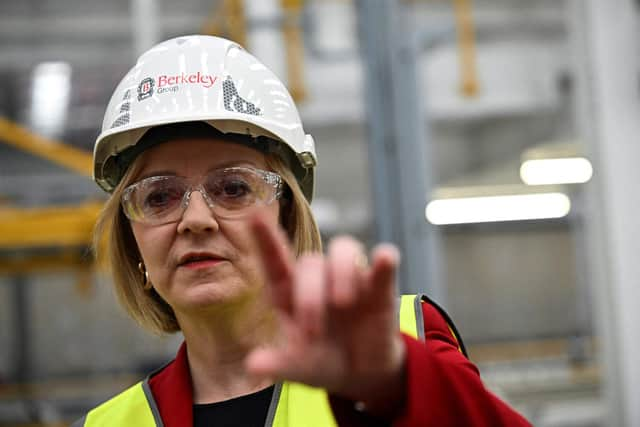Growth Plan mini-budget: Why the risks are huge and luck is needed with bold tax cuts plan
First the boldness.
It reaffirms a generous approach to households and businesses in terms of protecting them from potentially crippling energy price rises.
It also attempts to reboot the UK’s post Great Recession performance by raising economic growth, putting most of its eggs into the basket labelled ‘tax cuts’.


Next, the risks.
Advertisement
Hide AdAdvertisement
Hide AdThe dual approach of cutting taxes and raising government spending, via capping energy prices, inevitably leads to a big widening of the funding gap.
For this approach to be sustainable, tax cuts will need to have a quick and permanent impact on growth. Otherwise borrowing will balloon, debt will grow and the cost of servicing it will become much more expensive.
Will that faster growth arise? Another big risk.
The new Prime Minister and her Chancellor are basically going on a hunch. These are policies based on firmly held beliefs, not on strong evidence. For example, the evidence that corporation tax cuts will lead to rises in growth, tax take and investment is decidedly mixed. That’s in part why the previous Tory party Chancellor planned to hike them up from 19 per cent to 25 per cent in the first place.
In contrast to the Government’s prejudicial approach, the Office for Budget Responsibility (OBR) and the Bank of England are required to base their decisions, as best as possible, on the balance of evidence available.
And that is why the OBR has not been asked to produce a forecast of the impact of these changes, as it is highly unlikely they would agree with the Government’s view. That clash has been delayed until November.
Equally, the Bank will likely see tax cuts as a boost to consumer demand, but pushing up prices – rather than output – making them more likely to raise interest rates further and faster, to get back to its 2 per cent inflation target.
How might this all pan out? That depends on a few imponderables.
First, how long raised energy prices last for. The Government might be able to be this generous for a while, but not forever. At some point prices must fall or subsidies must fall.
Advertisement
Hide AdAdvertisement
Hide AdSecond, how borrowing costs evolve. For how long will the Government have the confidence of the markets and be able to borrow at a sustainable rate? If it loses that confidence then costs will soar and become a, growth slowing, burden.
Third, how the economy reacts to tax cuts. My bet is that, while there may be a temporary surge in activity, it won’t lead to to a lasting improvement.
Overall, a lot of luck will be needed for this approach to work. The likelihood is that the downside risks will become real and that a quick change of tack be needed, either cutting public sector budgets or reversing tax cuts.
Meanwhile the Scottish Government is left pondering whether or not to replicate the income tax, and stamp duty, changes. If not, then the differential in the top rate of income tax between Scotland and the rest of the UK would rise to 6p, which starts to bring ‘behavioural effects’ – as in where more mobile high earners decide to pay their tax – into play. Tricky.
- John McLaren is a political economist who has worked in the Treasury, the Scottish Office and for a variety of economic think tanks
Comments
Want to join the conversation? Please or to comment on this article.